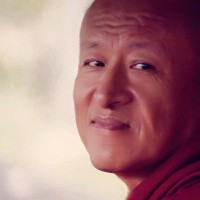Setting out on a spiritual path is a little like planning a trip — to Machu Picchu, for example. Some travellers will approach the project by investing a lot of time in reading travel books or Googling Internet sites about the best route to take and where to stay — a method that works, but only to a certain extent. Other travellers prefer a much simpler and safer method: to ask someone they know and trust who has already been to Machu Picchu to go with them and show them the way. Similarly, those wishing to follow the Buddhist path to enlightenment should rely on what are called in the teachings the “four authentics”: the authentic words of the Buddha (his teachings); the authentic clarification of the teachings that can be found in the shastras (commentaries) written by great masters of the past; the further clarification that is the result of authentic personal experience; and for this experience to find expression, an authentic guru.

Dzongsar Khyentse Rinpoche
from the book Not for Happiness: A Guide to the So-Called Preliminary Practices
Read a random quote or see all quotes by Dzongsar Khyentse Rinpoche.
Further quotes from the book Not for Happiness:
- Three higher trainings
- Opposite direction to dharma
- No substitute for being guided by a guru
- Maintaining a strong grip on the habits
- Merely the product of your own perception
- Dharma is not a therapy
- Our fundamental problem
- Sadness
- Mara’s five arrows
- Nothing genuinely works in samsara
- Mind-made illusions
- It cannot be fixed
- Very little time left for practice
- We must also practice it
- What Is Bodhichitta
- Without the personal advice of Buddha
- Everything we experience is a product of mind
- For the sake of all other beings
- Dawn of wisdom
- Spiritual practice is like riding a bicycle